The Boxer Dog Breed: A Loyal and Energetic Family Companion
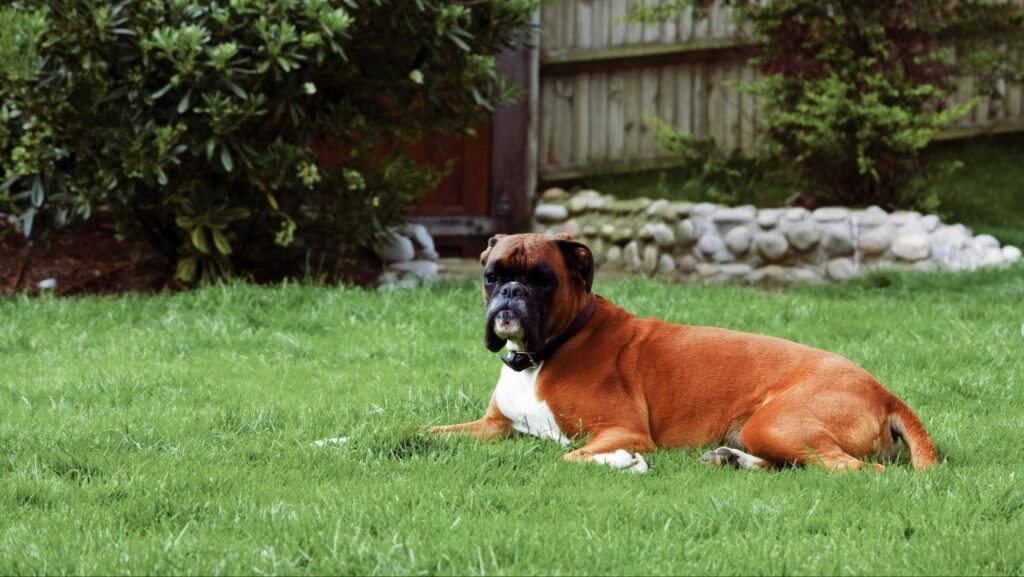
The Boxer Dog is one of the most beloved and recognizable dog breeds worldwide, known for its boundless energy, playful personality, and fierce loyalty. Originally bred in Germany as a working and guard dog, the Boxer has evolved into a fantastic family pet, excelling in roles from companion to athlete. This article dives deep into everything you need to know about the Boxer — from its history and temperament to training tips and health considerations.
History and Origins
The Boxer’s roots date back to 19th-century Germany, where it was developed from the now-extinct Bullenbeisser, a mastiff-type dog used for hunting large game like boar and deer. Breeders aimed to create a dog that combined strength, agility, and intelligence. By crossing the Bullenbeisser with the English Bulldog, they produced the early ancestors of the Boxer — a medium-sized, muscular dog with an athletic build and a keen sense of alertness.
The breed got its name “Boxer” because of the characteristic way it uses its front paws in a playful “boxing” motion during play or when engaging with other dogs. Over time, the Boxer became popular not only as a hunting dog but also as a protector and companion.
Boxers were first imported to the United States in the 1900s, where the American Kennel Club officially recognized the breed in 1904. Since then, the Boxer has grown in popularity as a family pet and working dog across the globe.
Physical Characteristics
The Boxer Dog is a medium to large dog, with a strong, muscular build that gives an impression of power and agility.
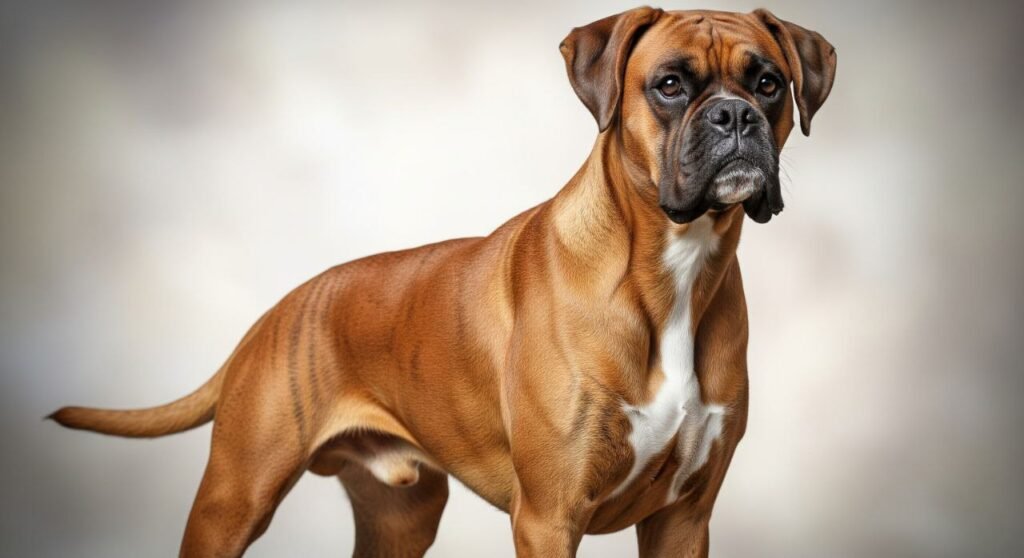
- Height: Typically 21.5 to 25 inches (55 to 63 cm) at the shoulder.
- Weight: Usually ranges from 55 to 70 pounds (25 to 32 kg).
- Coat: Short, smooth, and shiny. The coat is easy to maintain and comes in fawn, brindle, or white, with some markings.
- Face: The Boxer has a distinctive square muzzle with a strong jaw and a broad, blunt nose. Their expressive eyes are dark brown and convey intelligence and warmth.
- Ears and Tail: Traditionally, ears were cropped and tails docked, but many countries now prohibit these practices, so natural ears (folded) and tails (long) are common.
Temperament and Personality
One of the most charming aspects of the Boxer Dog is its personality. Known for being affectionate, energetic, and loyal, the Boxer thrives in active families and enjoys being part of daily life.
- Playful: Boxers have a puppy-like exuberance that often lasts into adulthood. They love to play and can be quite the entertainers.
- Loyal and Protective: They form deep bonds with their families and are naturally protective, making excellent watchdogs without unnecessary aggression.
- Intelligent: Boxers are quick learners and respond well to training. Their intelligence, combined with their desire to please, makes them versatile working dogs.
- Good with Children: The breed is famously good with kids, often described as gentle and patient, despite their energetic nature.
- Social: Boxers generally get along well with other pets if socialized early.
Training and Exercise
Boxers are a high-energy breed requiring plenty of physical and mental stimulation to stay happy and healthy.
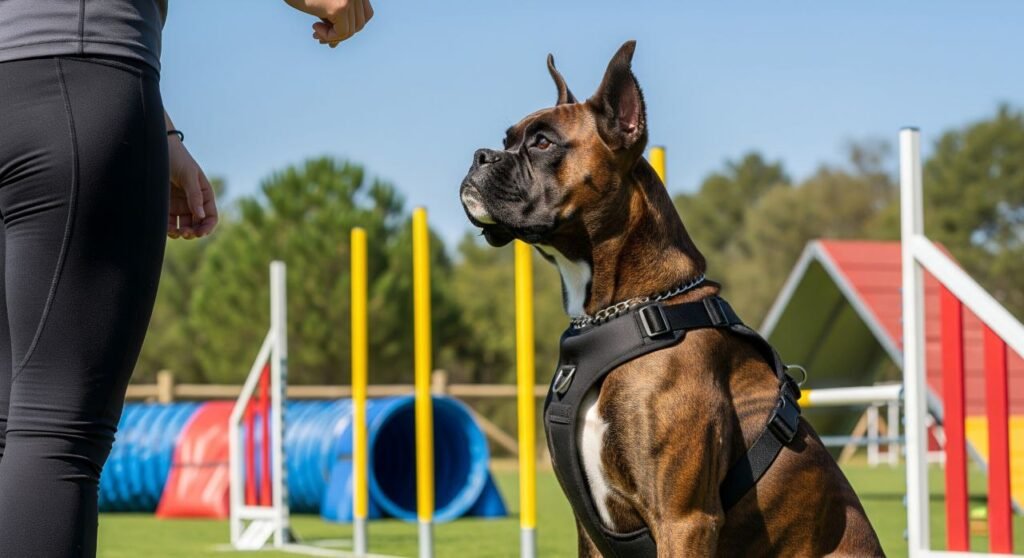
- Exercise Needs: Daily vigorous exercise is a must. This includes long walks, running, play sessions, and ideally, activities that challenge their agility and intelligence.
- Training Tips: Positive reinforcement works best. Boxers respond well to praise, treats, and consistency. They can be stubborn at times, so patient and firm leadership is key.
- Socialization: Early socialization helps Boxers grow into well-rounded adults. Introducing them to various environments, people, and other animals is essential.
- Activities: Boxers excel in dog sports like agility, obedience, and even tracking. Their athleticism and eagerness make them natural competitors.
Grooming and Care
Boxers have relatively low grooming needs due to their short coat, but they still require regular maintenance.
- Brushing: Weekly brushing is enough to keep their coat healthy and reduce shedding.
- Bathing: Bathe as needed, usually every few months unless they get particularly dirty.
- Dental Care: Regular teeth brushing is important for preventing dental disease.
- Nail Trimming: Nails should be trimmed regularly to prevent overgrowth.
- Ear Cleaning: Check and clean ears periodically to avoid infections.
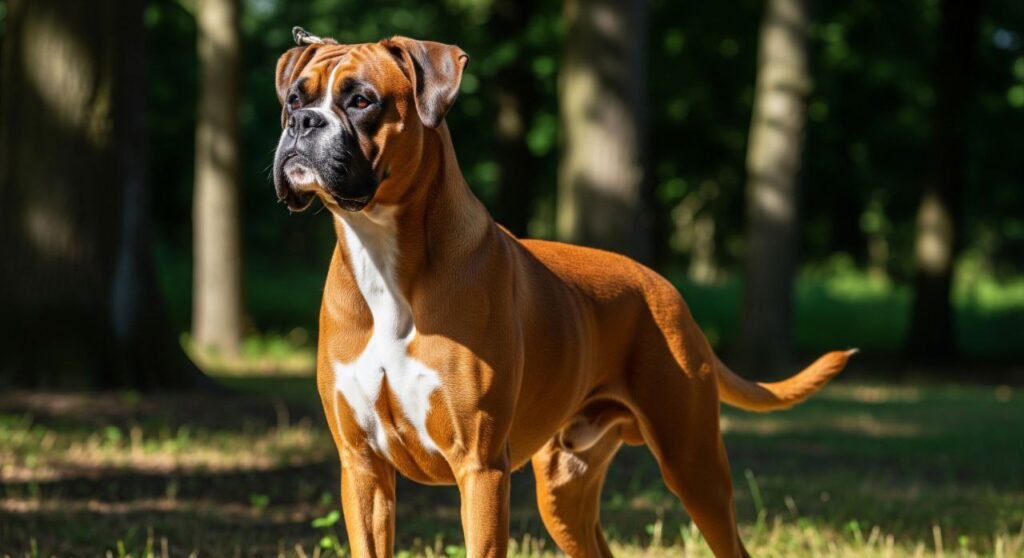
Health and Lifespan
Boxers are generally healthy dogs but are prone to certain breed-specific health issues:
- Lifespan: Typically 10 to 12 years.
- Common Health Concerns:
- Hip dysplasia
- Heart conditions such as aortic stenosis and cardiomyopathy
- Cancers, including lymphoma and mast cell tumors
- Hypothyroidism
- Allergies and skin problems
- Bloat (gastric torsion), a life-threatening condition common in deep-chested breeds
Also read: This Fearless Dog Looks Like a Beast But Wait Until You See Its Loyalty.Regular veterinary check-ups, a balanced diet, and regular exercise can help maintain your Boxer’s health and longevity.
Is a Boxer Dog the Right Dog for You?
Boxers make fantastic pets for active families who have time and energy to invest in their training and exercise. They thrive in homes where they are part of the family, included in activities, and given plenty of mental and physical challenges.
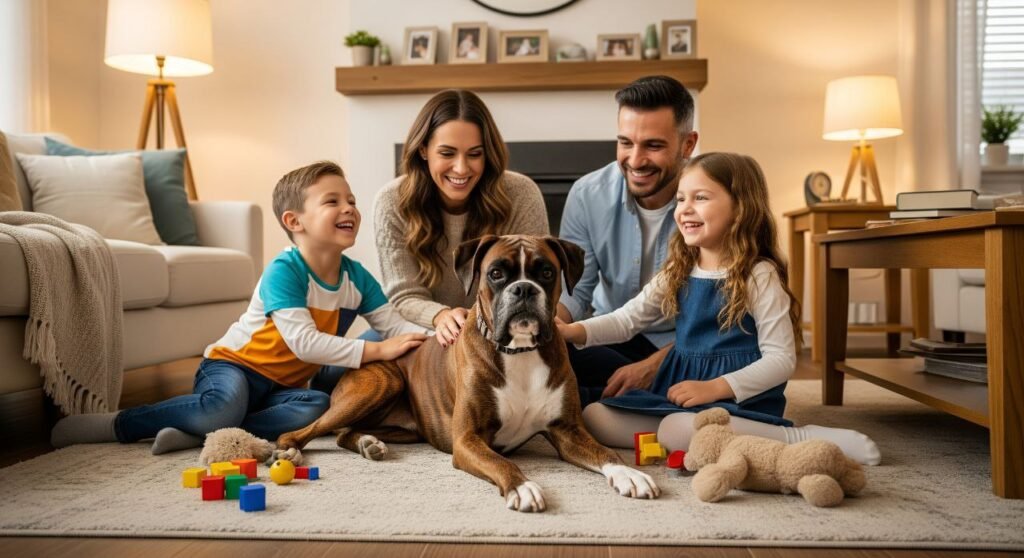
However, Boxers might not be the best fit for:
- Apartment dwellers with limited exercise opportunities
- People looking for a low-energy or low-maintenance dog
- Owners inexperienced with strong-willed or energetic breeds
If you are ready to welcome a lively, loving, and loyal dog into your life, the Boxer could be the perfect choice.
The Boxer Dog is a remarkable breed with a rich history, a vibrant personality, and a loving heart. Their combination of strength, intelligence, and affection makes them stand out as one of the best family dogs and companions. Whether you’re seeking a playmate for your kids, a loyal guard dog, or an athletic partner, the Boxer can deliver all that and more. Discover the complete history, characteristics, and care tips of the Boxer dog breed by reading the detailed article.

